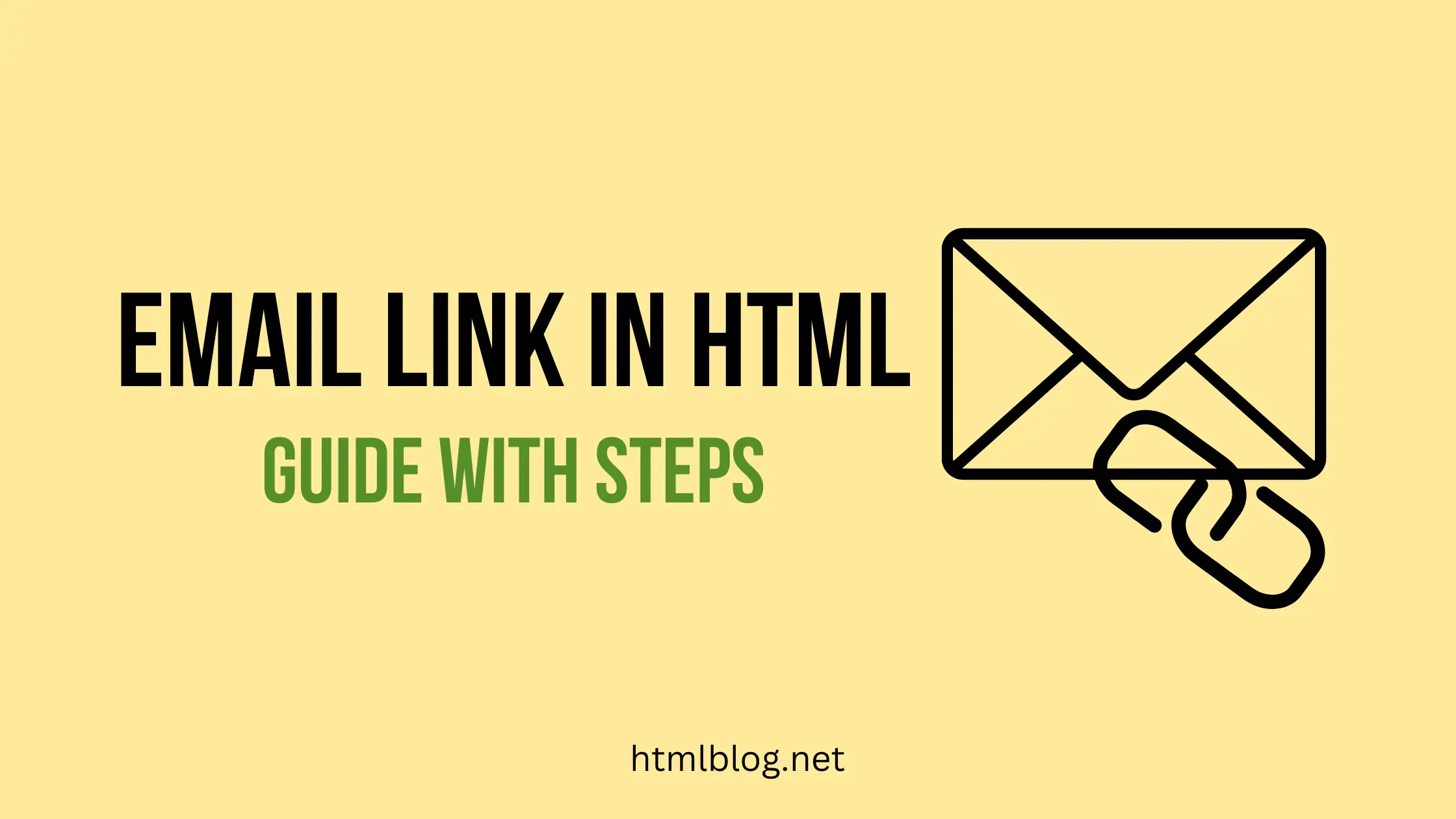What Represents an Email Link in HTML
An email link in HTML is a hyperlink that, when clicked, opens the user’s default email client with a pre-filled recipient’s email address. This powerful functionality allows visitors to initiate an email correspondence directly from your website, eliminating the hassle of copying and pasting email addresses into separate platforms.
What is a Mailto Link
At the heart of creating an email link in HTML lies the “mailto” link, a special attribute that triggers the user’s email application. A “mailto” link is structured as follows:
<a href=“mailto:[email protected]”>Send an Email</a>
When users click on the link, their email client opens with the recipient’s address (“[email protected]” in this case) already entered in the “To” field. This streamlines communication and encourages user engagement.
How to Create an Email Link in HTML
Creating an email link is remarkably simple. Follow these steps to create an effective “mailto” link:
- Step 1: Open your HTML document using a code editor.
- Step 2: Insert the following code where you want the email link to appear:
Replace “[email protected]” with the desired email address.
- Step 3: Save your HTML file and open it in a web browser to test the link’s functionality.
Example for Email Link in HTML
Let’s explore a practical scenario. Imagine you run a website for a customer support service. To facilitate user inquiries, you decide to add an email link. Here’s how you might implement it:
When users click the link, their default email client will open, ready to compose a message to “[email protected].”

Why It’s Beneficial to Create an Email Link in HTML
Making communication and desired action easier is something we all prefer. Creating an easily clickable mailto option is a small feature that has numerous benefits.
Enhancing User Interaction with a Simple Email Link
By creating an email link in HTML, you’re offering a seamless and convenient way for your visitors to reach out to you directly. Instead of relying on clunky contact forms that require numerous fields to be filled out, an email link simplifies the process. Users can effortlessly click on the link, which opens their default email client with your email address pre-filled. This user-friendly approach can lead to higher engagement and a more positive browsing experience.
Fostering Direct Communication Through HTML Email Links
Engaging directly with your audience is a fundamental aspect of any successful online endeavor. HTML email links empower your readers to initiate conversations effortlessly. Whether they have a question, feedback, or a collaboration proposal, a strategically placed email link encourages them to connect with you promptly. This direct line of communication not only builds trust but also opens doors to valuable opportunities.
Boosting Accessibility and Compatibility
Incorporating an email link in HTML is also a smart accessibility move. It ensures that even users who rely on assistive technologies, such as screen readers, can access and utilize the link effectively. Additionally, email links are highly compatible across various devices and platforms, ensuring a consistent experience for all users, regardless of their preferred device or operating system.
Strengthening SEO and Link Building Efforts
From an SEO perspective, HTML email links contribute to your website’s overall link profile. Search engines consider both internal and external links when determining the authority and relevance of your site. By strategically placing email links within your content, you’re subtly enhancing your link building efforts. This can positively impact your search engine rankings and organic visibility.
How to Avoid Spam Issues When Creating an Email Link in HTML
While email links offer convenience, they can also attract unwanted attention from spammers. To mitigate spam risks, consider these strategies:
- Use JavaScript: Employ JavaScript to generate the email link dynamically, making it harder for automated bots to extract the email address.
- Obfuscation: Slightly alter the email address’s format (e.g., “user [at] domain [dot] com”) to confuse spam bots while remaining comprehensible to humans.
- CAPTCHA: Implement CAPTCHA challenges to ensure that only genuine users can access the email link.
Conclusion
Incorporating email links into your website’s design empowers users to connect with you effortlessly, promoting seamless communication and engagement. By following the steps outlined in this guide, you can create effective email links while safeguarding against spam risks. Embrace the power of HTML to enhance user experience and propel your website toward greater interactivity. So, why wait? Start adding email links to your web pages and witness the positive impact on user engagement and satisfaction.




